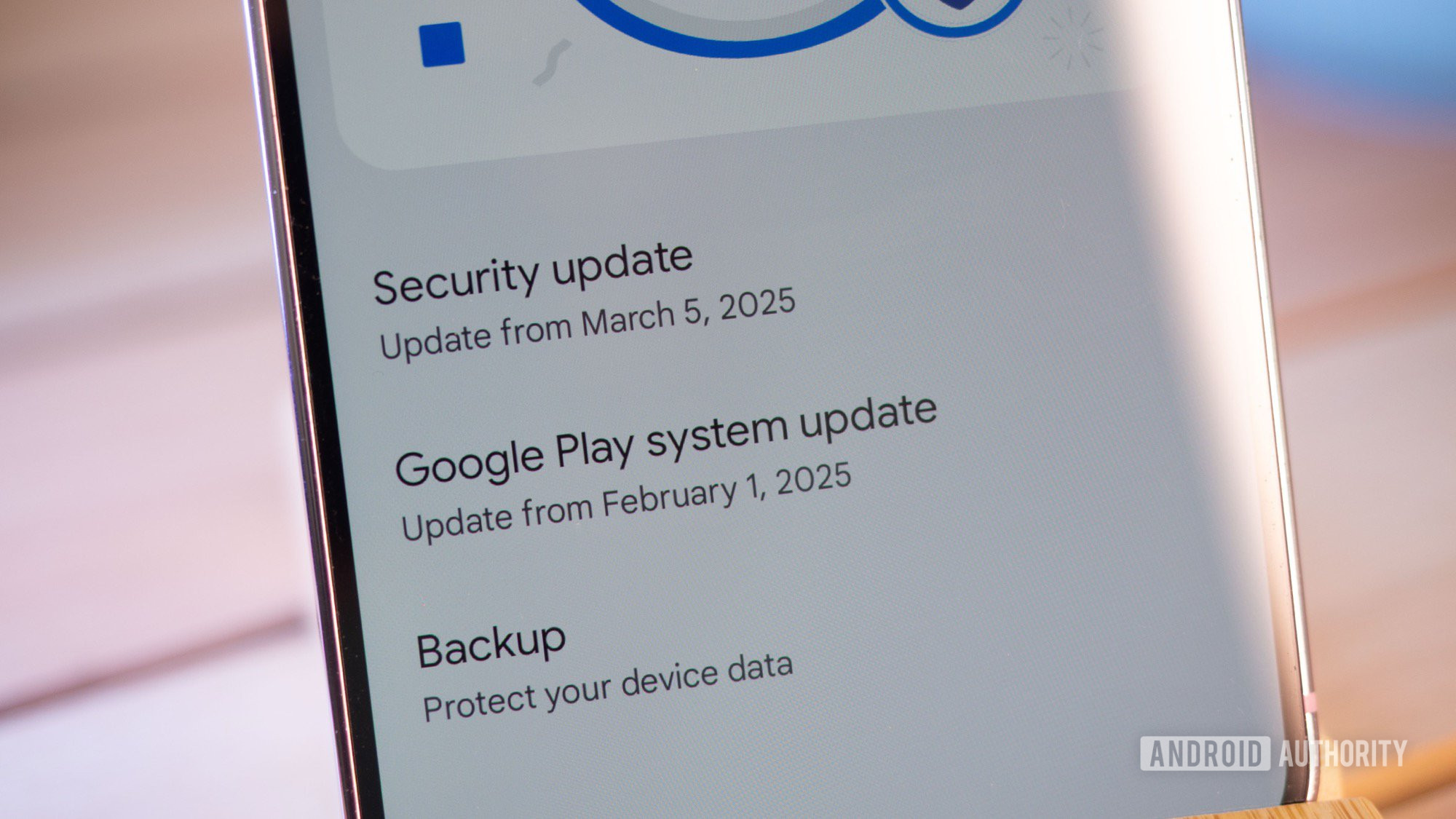
Rita El Khoury / Android Authority
If I had a penny for every single time I checked my Android phone for updates and got the all-clear “Your system is up to date” notice when there was actually a hidden update pending, well, I’d have a dollar or so. This issue is so frequent that it’s easily happened a hundred times or more on every Pixel, Galaxy, Nothing, HONOR, realme, or any other phone that has fallen in my hands in the last few years.
And no, I’m not talking about Android’s silly idea of not showing updates the first time unless I explicitly tap “Check for updates” — that’s a given at this point.
No, I’m talking about the Google Play system updates, which I often forget for months until it’s suddenly April, and my Play system is lagging on the previous year’s September release. So I smack myself gently over the head, realize that maybe this is why I haven’t received some of these newfangled features that Google has been bragging about, and apply the darned update. And now, finally, I’m really up to date.
So what are these Play system updates, where do they hide, and why doesn’t Google notify us when they’re available? I have an answer for the first, second, but not the third question.
How often do you check for Google Play system updates?
48 votes
What are Google Play system updates? And why do I need them?

Rita El Khoury / Android Authority
Before 2019, getting new features on your non-Pixel (or non-Nexus before it) Android phone was a bit of a Mission Impossible game. You had to wait for Samsung, Motorola, HONOR, Xiaomi, or other companies’ devs to completely test and release a full new software update for your phone, be it a new Android version or just a monthly patch, and it often took months — if not years on cheaper phones. Google had a way of bypassing that a bit through the pre-installed Google Play Services system app, which allowed it to roll some neat new features independently from full software updates, but there’s only so much it could do with just an app.
In 2019, things changed when Project Mainline launched. Google realized it was constantly facing an uphill battle to roll out new features to Android phones in a timely manner, so it took matters into its own hands by splitting away some key components of the Android system under Project Mainline. This would allow it to upgrade parts of the OS directly, issue new features, or make privacy and security enhancements without requiring a full software update and without relying on some other company’s efficiency.
Google split away parts of the Android system to simplify and speed up their upgrades without passing by manufacturers. Those are the Google Play system updates.
Those Google upgrades are the Google Play system updates I mentioned earlier, and over the years, they’ve brought us many features that we now use every day. Android 12’s Privacy Dashboard, last year’s Find My Device network expansion or Theft Detection Lock, the new instant hotspot as part of cross-device services, and many enhancements related to Play Protect, privacy, emergency SOS, app hibernation, and more came from these Google Play system updates. That’s to say, they’re not anodyne — not at all.
So when Google announces a new feature coming to all Android 10 phones in a blanket statement like that, it’s often implying that it’ll send it through a Play System update, not through a software update. Google knows it can reach all Android phones with this, and it doesn’t need approval or testing from any specific manufacturer to send it to your Galaxy or your Moto.
These updates are supposed to come quasi-immediately to my phone, your phone, and every supported phone out there. And the fact is: they often do, except they’re partly hidden, and Google doesn’t notify us about them. It just waits silently until you reboot your phone — which may be today or in three months’ time — and then applies them.
So, if you’ve ever found yourself wondering where that promised new feature was and why it’s taken months and hasn’t shown up on your phone yet, it’s because of this.
Where can I get these Google Play system updates?

Rita El Khoury / Android Authority
Alright, suppose I want to force-update my Pixel phone. I logically follow the steps I’ve memorized through the years and go to Settings > System > Software updates, and… no. That’s where the full software update sits (and app updates, for some reason?!), but not these crucial Play system updates.
Google, in all its wisdom, has decided to hide these updates somewhere else. To get them on my Pixel, I have to dig into Settings > Security & privacy > System & updates and lo-and-behold, now I have both the main software + security update as well as the Google Play system update. Tap that to check for a new update, download it, and restart your phone to apply it.
(Note: If you don’t have a Pixel phone, use your settings’ search bar to look for “Play system update.” That should find the menu, wherever it’s hidden on your Android phone’s skin.)
If you haven’t updated or restarted your phone recently, you’ll see a really old release date for your Play system version, such as September 2024, like my Nothing Phone 2 told me. Yikes. On my Pixel 9 Pro, my daily driver, where the main software is up to date with the March security patch, the Play system was lagging on a February release. I updated it to the March release and then once more with a more recent March release. And I’m very diligent about this! Imagine if I wasn’t.
Why doesn’t Google make these updates more visible?

Rita El Khoury / Android Authority
Just look at the ridiculousness of this image above on my Pixel 9 Pro Fold. One part of my phone says it’s up to date, the other says it’s downloading an update. At the same time, literally. One of these is a lie.
So we come to the million-dollar question: Why doesn’t Google make these updates it worked so hard to implement more visible? I don’t know. I don’t know why there are two separate update menus on Pixels and several other Android phones. That’s confusing as hell. Even more so when the main update menu houses a useless app update shortcut, but not a shortcut to get to these Play system updates.
I also don’t know why Play system updates are hidden under the Security & privacy menu, where I’d have never thought to look for any update — yes, some of these have brought security and privacy improvements in the past, but they’re not just that. Actually, I don’t even know why these are called “Google Play” system updates when half of them don’t even touch the Play Store or any service under the Play umbrella!
The whole point of Play system updates was to get features out to users as soon as they’re available. But Google hides the menu and doesn’t notify us about new updates.
More importantly, though, I don’t know why Google doesn’t just surface a notification to let us know about these pending updates. What would it take to just pop up when there’s a new release and be like, “Hey, Rita, your phone has an update,” so I can quickly get it?
No, instead, Google wants these to be invisible, so it waits for our phones to restart to apply a pending Play System update. And if our poll results are anything to go by, half of you are only restarting your phones every few months — or never. Let’s be clear, there’s no need to boot an Android phone all that often anymore; I test beta apps and random software for a living, and I only restart my phone about once a month!
It’s so saddening and maddening to see Google go through all the trouble of splitting and modularizing Android, working on new features, issuing an update for them, and then just… not telling me. Or you. It’s as if Google’s engineers ran a full marathon and quit a meter before the finish line! The whole point of this whole charade was to get us new features and enhancements as soon as possible. Instead, our phones lag behind on a months-old version, and we’re none-the-wiser.
📰 Crime Today News is proudly sponsored by DRYFRUIT & CO – A Brand by eFabby Global LLC
Design & Developed by Yes Mom Hosting






